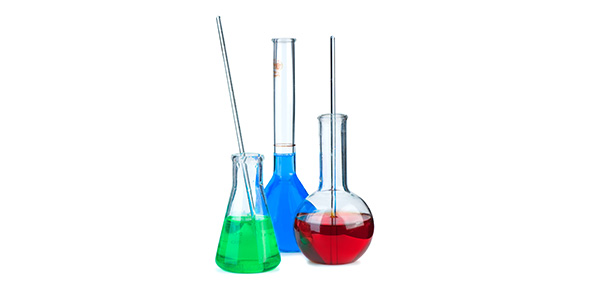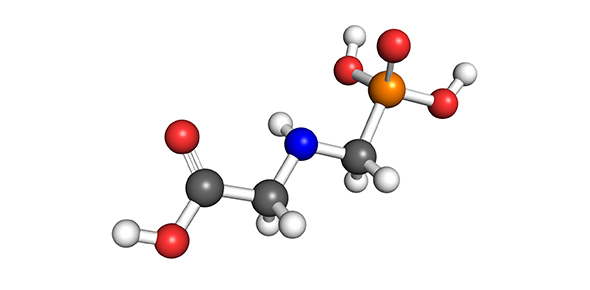Related Flashcards
Cards In This Set
| Front | Back |
|
*Patient who undergone radical mastectomy>Swelling of the arm mechanism?
|
*Patient has Lymphedema*Remember that Lymph nodes remove excess fluid and proteins from interstitium(Part of ECF which also includes IntraVascular compartment, but lymphatics remove fluid and protein that leaked from INTRAvascular compartment into Extravascular compartment=Interstitial fluid), surgery most likely damaged lymphatic return>Accumulation of this fluid and protein >Lymphedema of arm.
|
|
*CHF will lead to marked edema of which region in bedridden patient?
|
*Sacrum Not lower extremities(Would be the case in a standing patient)*Remember Edema is caused by movement of Fluid from Intravascular>Extravascular space(Both are part of ECF)-in this case manily trough Increased Hydrostatic pressure(Promotes movement out of the vasculature)
|
|
Patient has HF/RF what can you say about their oncotic pressure?
|
*Oncotic pressure is decreased due to Na and Water retention(Renal failure/HF- remember HF can cause renal failure)*Increase in hydrostatic pressure is the mechanism of edema in HF but the point is Oncotic pressure can be decreased too as HF>Renal failure>Na and Water Retention>LESS Oncotic pressure.*Hypoalbuminemia>Decreased oncotic pressure(Less protein) is the major cause of edema in Neprhotic syndrome/Cirrhosis,Malnutrition, but RF can also cause Na and water retention which is another mechanism of Decreased oncotic pressure.*Most common cause of Hypoalbuminebia is Acute/Chronic infection>Decreased oncotic pressure
|
|
*Peau'd orange(Pitted,dimpled appearance of breast) appearance of breast due to carcinoma is caused by?
|
*Spread of cancer to Dermal Lymphatics, So the mechanism is Lymphatic Obstruction.
|
|
*Why thiazide diuretics could help with Neprhotic syndrome>edema?
|
*Because in Nephrotic syndrome your fludid will leak from Intravascular space to Extravascular space(Due to Decreased Oncotic pressure), Less fluid in intravascular space means less blood reaches kidney>Upregulation of RAAS>Na/water retention>More Edema.*Thiazides they promote excretion of Na at distall convoluted tubule by Blocking Na/Cl Symporter(Doesn't need ATP)>Less Na retention>less Fluid will follow+Less decrease in Oncotic pressure> Less edema.
|
|
*Pitting edema(When you press your finger,identation stays there for a while after release) can be caused by?
|
*Increased Hydrostatic pressure(HF.Na retention in interstitial space=part of ECF)*Decreased oncotic pressue(From hypoalbuminemia, Nephrotic syndorme,cirrhosis)*NON-pitting can be caused by lymphedema(Due to Lympathic outfow obstruction),Elephantiasis(due to Wuchera Bancrofti) ,HYPOTHYROIDISM(Pretibial Myxedema-No eating up of GAG's by Thyroid hormone),Graves disease(Pretibial myxedeba due to dysregulation of dermal fibroblasts-which have receptors for TSH Stimulating antibodies.)
|
|
*How patient with Right HF can end up with dyspnea, pulmonary infiltrates and frothy sputum without fever?*Remember Pulmonary emphysema,Pulmonary hypertension can cause right heart failure(RH has to work harder>Hypertrophies and fails)
|
*Well he can't directly BUT*RHF can cause LHF due to backflow of blood into systemic circulation from right atrium as right ventricle can't pump blood out properly(Patient can develop Nutmeg liver due to blood backing up into SVC/IVC/Hetapic vein/Central vein-look for AST/ALT elevation as it can indicate centrilobular necrosis).*As there is higher workload on left heart it can hypertrophy and fail>Backup of blood into Pulmonary veins(bring oxygenated blood into LA)>RBC leak out into alveoli where macrophages eat them up>Heart failure cells which can produce Frothy sputum when coughed up, don't confuse this with Rusty colored sputum which would make you think about bacterial pneumonia like Strep.pneumo)*Hey don't confuse HF cells(Macrophages filled with hemosiderin-byproduct of hemoglobin from RBC) which is Formed in CHRONIC HF with Transudate that is formed with ACUTE HF (Like few days after MI if patient developes HF,you are more likely to see Transudate=HYpocellular,low protein in Alveoli)
|
|
*OLD Guy fell down when he was jerking-off in the shower lol, so he hits his head, what type of fluid collections is he likely to experience?*Note CT shows Crescent-shaped collection in subdural space.
|
*Hematoma-Collection of blood in potential space/tissue, Most likely subdural because he is old, so what? well Old people/alcoholics and people with Alzheimer's have increased risk of SUBDURAL hematoma because between dura and arachnoid(Subarachnoid space) there is increased Subdural space(due to brain shrinkage) in these conditions>Larger distance bridging veins have to to bridge.*NOTE: BABIES are susceptible to subdural hematoma for different reason-THINNER WALLED BRIDGING veins can be ruptured by SHAKING BABY, also think of abuse.*Now EPIdural hematoma's are common after accidental injuries, Motorcycle accidens, Epidural hematoma LOVES PTERION(Temporal region) where it can damage MIDDLE MENINGIAL ARTERY(Branch of maxillary) but on CT it has LENS Shape.*Note Unlike epidural hematoma, subdural can Cross suture-lines.Now our old playa can have another less severe fluid collection which is called ecchymoses which are often result of Contusion, bruises and basically are blotchy hemorrhage into SKIN(in our case),Mucosal and serosal surfaces(Don't confuse Ecchymoses with Petachiae or purpura, petechiae(Small pinpoint spots on epicardium for ex.) is smaller than 2mm while purpura(In TTP)is larger than 3mm,ecchymoses is the largest one 1-2cm)can be due to trauma. -pEtEchiAE is smAllEst, loves Epicardium.
|
|
*How propagation of thrombus from local areas is inhibited?
|
*By Secretions from INTACT endothelium nearby.*PGI2(Prostacyclin) and NO prevent platelet aggregation near intact endothelium by vasodilation and thus prevent propagation of thrombus from damaged to intact sites+ Thrombomodulin present on INTACT endothelium binds up Thrombin and inhibits Clot formation by activating protein C(Anticoagulant factor which along with protein S is inactivated by warfarin and thus INITIALLY you are actually HYPERcoagulable when on warfarin till old factors 2,7,9,10are cleared out)
|
|
*VWF deficiency(Autosomal Dominant)is problem with Platelet adhesion(VWF is kind of glue between exposed collagen on damaged endothelium and between platelets) so manifestations?
|
*Increased bleeding time(defective platelet plug formation)*vWF normally stabilizes Factor 8 by protecting it from proteolysis, factor 8 is involved in Intrinsic coagulation pathway>Defect in intrisnic coagulation pathway>Increased PTT only Not PT.*NOTE:Platelet count is Normal UNLIKE TTP where it is decreased, in vwf def. platelet plug formation is defevtive but platelet count cold be perfectly normal.*Treat with DDAVP>Synthethic analog of vasopressin>INdirect release of vWF from endothelium.
|
|
*Substance that was obtained from dense granules of platelets from normal people induces platelet aggregation in other unaffected individuals however when this substance is added to blood from patients with bleeding disorder, platelet aggregation doesn't take place, what is this substance and what disease might patients be experiencing?
|
*Substance that was derived from Dense granules and induces platelet aggregation in unaffected individuals is ADP.*Platelet stimulation By ADP results in exposure of Gp2b/3a on platelets where Fibrinogen can bind up platelets and promote their aggregation, patients could have had Glanzmann Thrombasthenia which is AR or Autoimmune mediated defect in Gp2B/3A receptos> platelet aggregation is defective>Increased bleeding time with normal platelet count, so in our case there is defect in platelet to platelet adhesion due to defect of Gp2B3A(Don't confuse this with AR defect of Gp1B on platelets which in that case can't bind up vWF on endothelium>Increase bleeding time,No platelet agglutination with risonectin.)
|
|
*They describe patient who is a young boy who has history of upper airway obstruction due to neck hematoma+With no Petechiae,purpura, but with decreased motion in knees and ankles.LABS:Decreased Factor 8 activity+Normal Platelet Count+Increased PTT(Intrinsic pathway) what is the mechanism of the disease?
|
*Decrease in production of thrombin.*Decreased factor 8 was complete giveaway, as Factor 8 along with Factor 3 and 5 are Cofactors for catalyzing the reaction that forms Thrombin.*Out patient likely has Hemophilia A.*Note factor 8 is also needed for conversion of factor 10>10a.*Also if you didn't know thrombin(2a) converts fibrinogen to fibrin(Ia)which witht he help of Ca(4) and 13a>Mesh formation that stabilizes platelet plug.*remember Hemophilia A is X linked recessive(Mainly found in boys)
|
|
*How would you differentiate Liver parenchymal disease from Antiphospholipid syndrome by transfusion of plasma into the patient?
|
*Elevated prothrombin(PT) time will be corrected with plasma transfusion from unaffected individual because Liver parenchymal disease(Cirrhosis) can lead to Factor 2,7,9,10 deficiency, because these factors are synthesized in Liver >affecting extrinsic coagulation pathway.(When patient lacks these factors plasma from donor who has these factors will correct elevated prothrombin time due to compensation of these factors by donor plasma but this effects aren't long lasting of course- exact same thing would happen with Warfarin(Leading to vit.k def) or Vit.K def. from other reasons (Like Broad spectrum antibiotics killing your K synthesizing bacteria in gut) BUT Antiphospholipid syndrome involves antibodies that have inhibitory affect on in vitro coagulation tests and is NOT corrected with normal plasma)*Note Antiphospholipid antibodies also prolong PT
|
|
*They will describe Immobile diabetic patient with Thrombosis of LAD (Branch of LCA) and will ask you what is the etiology stasis of blood flow/damage to endothelium?
|
*Damage to endothelium as most common cause of Coronary artery thrombosis(N1 killer) is Atherosclerosis(which is accelerated by Diabetes type 1 AND 2)*Stasis of blood flow(Due to prolonged immobilization) is important in Low pressure system-VEINS(Which can embolize from DV of legs most commonly below the knee to Pulmonary arteries>Wedge shaped infarct(Dichotomous branchin) of lungs>Electromechanical dissociation with Acute cor pulmonale>SUDDEN DEATH)
|
|
*So you think the fact that Factor V(leiden) def is way more common cause of hypercoagulable state than factor 3 and protein C deficiency is Bullshit?
|
*Well what if they describe YOUNG(Teens-early 20's)with history of DVT's and ask you what is MOST likely cause of her hypercoagulable state and yes they will drop factor3,protein C def as distractors ALONG with Homocystinuria(Promotes atherosclerosis>Thrombosis),Smoking,Oral contraceptive use(higher risk i Older patients)*Factor V(Leiden) is best choice, because MULTIPLE DVT's at such a young age most likely indicates inherited coagulopathy from which Facor V def is most common cause of hypercoagulable state.(More than 50% of patient with recurrent DVT's have this mutation)*Remember cause of Factor V deficiency is point mutation(Glutamine Replaces Arginine)>Resistant Factor 5 to Protein C which would normally degrade it.
|






